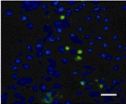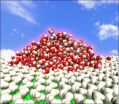(Press-News.org) A novel study reveals that more than half of liver transplant patients want to be informed of donor risk at the time a liver is offered for transplantation. Nearly 80% of those patients want to be involved in the decision of whether or not to accept the organ according to findings published in Liver Transplantation, a journal of the American Association for the Study of Liver Diseases and the International Liver Transplantation Society.
There is a shortage of available donor organs, which leaves many on the liver transplant waiting list. Currently, there are more than 16,000 patients in need of a liver in the U.S., according to the Organ Procurement and Transplantation Network (OPTN). While the use of extended criteria donors increases available organs, it comes with higher donor-related risks compared to a standard criteria donor. Medical evidence shows discussions with transplant candidates regarding donor-related risk vary from country to country.
"Donor-related risks such as disease transmission and graft failure are weighed against the patient's risk of remaining on the waiting list," explains Dr. Robert Porte from the University Medical Center Groningen in The Netherlands. "While active patient decision making and donor-specific risk have been discussed in the medical literature, our study is the first to report the opinions of liver patients on these issues."
For the present study the team surveyed 40 liver transplant candidates and 179 patients who received liver transplants at the University Medical Center between 2000 and 2010. The study group was primarily middle-aged, Dutch men. Between 60% and 75% of the patients wanted to be informed of donor-related risk, with 53% of the group preferring to be informed of these risks at the time of organ offer. Of these patients, 80% wanted to be involved in deciding to accept the organ or not, 11% wished to make the final decision alone and 10% did not want to be involved in the decision-making process.
"Our findings clearly show that the majority of transplant candidates would like to be involved in the decision-making process," concludes Dr. Porte. "Implementing this knowledge and standardizing the content, the manner of transfer and the amount of information we provide to our patients at the different time points along the transplant allocation process will be important to provide the same opportunities and care to every patient on the waiting list."
INFORMATION:
This study is published in Liver Transplantation. Media wishing to receive a PDF of this article may contact sciencenewsroom@wiley.com.
Full citation: "Shared Decision Making in Transplantation: How Patients See Their Role in The Decision Process of Accepting a Donor Liver." Sanna op den Dries, Coby Annema, Aad P. van den Berg, Adelita V. Ranchor and Robert J. Porte. Liver Transplantation; (DOI: 10.1002/lt.23921).
URL: http://doi.wiley.com/10.1022/lt.23921
Author Contact: Media wishing to speak with Dr. Porte may contact Janneke Kruse with the Universitair Medisch Centrum Groningen at j.m.kruse@umcg.nl.
About the Journal
Liver Transplantation is published by Wiley on behalf of the American Association for the Study of Liver Diseases and the International Liver Transplantation Society. Since the first application of liver transplantation in a clinical situation was reported more than twenty years ago, there has been a great deal of growth in this field and more is anticipated. As an official publication of the AASLD and the ILTS, Liver Transplantation delivers current, peer-reviewed articles on surgical techniques, clinical investigations and drug research — the information necessary to keep abreast of this evolving specialty. For more information, please visit http://wileyonlinelibrary.com/journal/lt.
About Wiley
Wiley is a global provider of content-enabled solutions that improve outcomes in research, education, and professional practice. Our core businesses produce scientific, technical, medical, and scholarly journals, reference works, books, database services, and advertising; professional books, subscription products, certification and training services and online applications; and education content and services including integrated online teaching and learning resources for undergraduate and graduate students and lifelong learners.
Founded in 1807, John Wiley & Sons, Inc. (NYSE: JWa, JWb), has been a valued source of information and understanding for more than 200 years, helping people around the world meet their needs and fulfill their aspirations. Wiley and its acquired companies have published the works of more than 450 Nobel laureates in all categories: Literature, Economics, Physiology or Medicine, Physics, Chemistry, and Peace. Wiley's global headquarters are located in Hoboken, New Jersey, with operations in the U.S., Europe, Asia, Canada, and Australia. The Company's website can be accessed at http://www.wiley.com.
To accept or not accept -- Patients want a say in liver transplant decisions
2014-07-15
ELSE PRESS RELEASES FROM THIS DATE:
Cardiac patients underserved globally due to lack of rehab programs: York University researcher
2014-07-15
TORONTO, July 15, 2014 — Rehabilitation programs must become an integral part of cardiac care to significantly reduce the burden of living with heart disease, one of the most common chronic diseases and causes of death globally, according to York University Professor Sherry Grace.
"Cardiac rehabilitation is a cost-effective program offering heart patients exercise, education and risk reduction," says Grace, noting that participation results in 25 per cent less death, lower re-hospitalization rates and better quality of life.
Despite these benefits, cardiac rehabilitation ...
Neuropeptide Y protects cerebral cortical neurons
2014-07-15
Neuropeptide Y exhibits neuroprotective effects. Whether the neuroprotective effects are mediated by the pathways including regulating the immunological activity of reactive microglia and reducing cytokines remains unclear. Prof. Wenqing Zhao, Graduate School, Heibei Medical University, China and his team confirmed that neuropeptide Y prevented excessive production of interleukin-1β and tumor necrosis factor-α by inhibiting microglial reactivity, reduced N-methyl-D-aspartate current in rat cortical neurons, preventing excitotoxicity, and thereby protecting neurons. ...
Hippocampal neuron-related factor expression and neuronal injury after TBI
2014-07-15
Traumatic brain injury (TBI) causes gene expression changes in different brain regions. Cyclooxygenase-2, glutamate receptor-2, and platelet activating factor receptor expression levels are related to the occurrence and development of TBI. However, the precise relationship between the expression levels of these three factors and neuronal injury after TBI remains poorly understood. Zhiqiang Li, Inner Mongolia Corps Hospital, Chinese People's Armed Police Forces, China performed a study and showed that sequential expression of cyclooxygenase-2, glutamate receptor-2, and platelet ...
Signaling pathway for ginsenoside Rb1 promoting hippocampal neuronal neurite outgrowth
2014-07-15
The main pathological changes of Alzheimer's disease (AD) include amyloid-beta protein-induced hippocampal neuronal injury and neurite outgrowth impairment. Phosphatidylinositol 3-kinase (PI3K)/Akt pathway and mitogen-activated protein kinase (MAPK) pathway are the important signaling pathways respectively responsible for regulating synaptic plasticity and neuronal survival. In view of the fact that ginsenoside Rb1 exhibits anti-aging and anti-dementia effects, Prof. Qionglan Yuan and her team, Department of Anatomy & Neurobiology, Tongji University School of Medicine, ...
The ADC does not reflect cytotoxic edema on the uninjured side after TBI
2014-07-15
It is currently difficult to treat traumatic brain injury (TBI) in the clinic. There are abundant neural network connections and humoral regulation mechanisms between the cerebral hemispheres. Brain tissue on the uninjured side after TBI may also undergo abnormal changes, but these changes remain poorly understood. Hong Lu and her team, Affiliated Haikou Hospital, Xiangya School of Medicine, Central South University, in China performed a study to investigate whether apparent diffusion coefficient (ADC) measurements can reflect cytotoxic edema on the uninjured side using ...
Protective effect of α-synuclein knockdown on dopaminergic neurons
2014-07-15
The over-expression of α-synuclein is a major factor in the death of dopaminergic neurons in a methamphetamine-induced model of Parkinson's disease (PD). Dr. Huijun Wang, School of Basic Medical Sciences, Southern Medical University, China and his team injected α-synuclein-shRNA lentivirus stereotaxically into the right striatum of experimental rats to inhibit α-synuclein mRNA and protein expression. Results showed that after α-synuclein knockdown, the depression manifestations of PD rats were reduced, striatal dopamine and tyrosine hydroxylase levels ...
Shanghai scientists challenge classical phenomenon that water always completely wets water
2014-07-15
The molecular scale behavior of water at a solid/liquid interface holds fundamental significance in a diverse set of technical and scientific contexts, ranging from the efficiency of oil mining to the activity of biological molecules. Recently, it has become recognized that both the physical interactions and the surface morphology have significant impact on the behavior of interfacial water, including the water structures and wetting properties of the surface.
In a new review, Chunlei Wang, Yizhou Yang and Haiping Fang of the Shanghai Institute of Applied Physics report ...
SWI assesses signal strength in different brain regions after acute hemorrhagic anemia
2014-07-15
Acute hemorrhagic anemia can decrease blood flow and oxygen supply to brain, and affect its physiological function. Detecting changes in brain function in patients with acute hemorrhagic anemia is helpful for preventing neurological complications and evaluating therapeutic effects. Susceptibility-weighted imaging (SWI) imaging is a novel, non-invasive method for detecting changes in cerebral oxygen levels that may provide more detailed information regarding cerebral blood flow in patients with hemorrhage. Dr. Jun Xia, Second People's Hospital of Shenzhen City, First Affiliated ...
Taking B vitamins won't prevent Alzheimer's disease
2014-07-15
Taking B vitamins doesn't slow mental decline as we age, nor is it likely to prevent Alzheimer's disease, conclude Oxford University researchers who have assembled all the best clinical trial data involving 22,000 people to offer a final answer on this debate.
High levels in the blood of a compound called homocysteine have been found in people with Alzheimer's disease, and people with higher levels of homocysteine have been shown to be at increased risk of Alzheimer's disease. Taking folic acid and vitamin B-12 are known to lower levels of homocysteine in the body, so ...
How strongly does tissue decelerate the therapeutic heavy ion beam?
2014-07-15
Irradiation with heavy ions is suitable in particular for patients suffering from cancer with tumours which are difficult to access, for example in the brain. These particles hardly damage the penetrated tissue, but can be used in such a way that they deliver their maximum energy only directly at the target: the tumour. Research in this relatively new therapy method is focussed again and again on the exact dosing: how must the radiation parameters be set in order to destroy the cancerous cells "on the spot" with as low a damage as possible to the surrounding tissue? The ...







